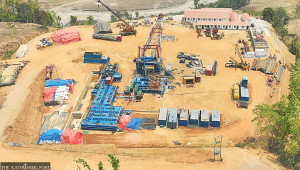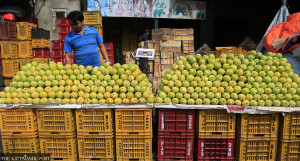Editorial
How to spend it
Govt should devise policies to make best use of remittances
With remittances amounting to almost 30 percent of the economy, Nepal has become the third most remittance-dependent country in the world. Yet, despite its growing size, it is debatable if the incoming capital has been put to productive use.
Remittances have already generated various positive effects on our economy through channels such as savings, investment, growth and poverty reduction, among others. However, according to the Nepal Living Standards Survey (NLSS) 2010-11, 79 percent of the total remittance received by each household is being used for ‘non-productive’ purpose, namely consumption. Although remittance is increasing social capital through personal investments in education and health, they are not considered ‘productive’ in strictly economic terms. Moreover, growing remittance is fuelling imports and widening the country’s trade deficit. The country is also facing an acute labour shortage due to the out-migration of a large number of its youths.
But this trend might be changing now. A soon-to-be-released Nepal Rastra Bank (NRB) study estimates that only 25 percent of money sent by Nepalis working abroad is used for daily consumption, while 28 percent goes into savings. But the NRB study was only conducted among 320 households, whereas the NLSS was carried out in 7,020 households.
In many cases, the inflows of remittances into developing countries dwarf those of foreign development assistance and foreign direct investment. Consequently, remittances are often the most important item in the current account to finance national development.
This is already happening in Nepal. According to the World Bank, about $7 billion worth of remittance entered Nepal in 2015—almost 60 percent more than the $4.4 billion pledged by donors for post-earthquake reconstruction.
Productive channelling of remittance, or the savings from it, depends to a significant extent on the government. The capital earned by the migrant workers needs to be allocated to sectors such as infrastructure or industrial production that can help the overall economy grow. While an investor-friendly environment is necessary, migrant workers and their families should also be made aware of the benefits of investing in fixed capital assets such as machinery or small entrepreneurship ventures so as to facilitate capital formation even in the future. As remittances are not a durable source of income that comes at a high social cost, it is in the best interest of the remittance-receiving families to invest the money wisely.
From the decade-long conflict to the earthquake last year, the hard-earned money of our migrant workers has propped up the economy in our worst of times. As the NRB projection is based on a small sample
size, it is at best indicative. Better research is required on the use of remittances in the country, which can help formulate appropriate policies to utilise the money in the best interests of the migrants and the country as a whole.




 21.63°C Kathmandu
21.63°C Kathmandu














